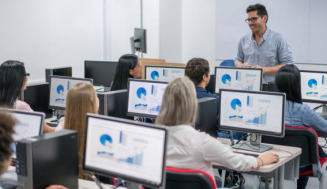BECE Past Questions & Answers – 2008 (SCIENCE)
SCIENCE1
OBJECTIVE TEST
45minutes
1. A metre rule can be used for measuring the
A. volume of a liquid
B. area of a ball
C. length of a table
D. diameter of a wire
2. Heat travels through vacuum by
A. conduction B. convection C. radiation
D. convection and radiation
3. A mirror is used to direct sunlight onto the wall of a classroom by
A. dispersion B. refraction C. reflection D. radiation
4. Which of the following energy changes takes place in ringing bell?
A. Potential to kinetic
B. Potential to sound
C. Mechanical to sound
D. Sound to light
5. A fuse is connected in an electric circuit to
A. prevent electric shock
B. increase the current
C. prevent current from increasing
D. increase the heat generated
6. Which of these objects is a magnetic substance?
A. Aluminium
B. Brass
C. Copper
D. Iron
7. Which of the following bodies are natural sources of light?
I. Moon
II. Sun
III. Firefly
A. I and II only B. I and III only C. II and III only
D. I,II and III only
8. Which of the following statements describes the nature of light?
A. It passes through all objects
B. It is absorbed at a polished surface
C. It travels in a straight line
D. It is always reflected in a medium
9. Metals are able to conduct electricity because they possess
A. free electrons
B. neutrons
C. atoms
D. free protons
10. Beriberi is caused by deficiency of vitamin
A. A B. B C. E D. K
11. Which of the following fruits is adapted for dispersal by air?
A. Succulent fruit
B. Brightly coloured fruit
C. Sticky fruit
D. Hairy fruit
12. The food substance needed for growth and repair of tissues is
A. carbohydrate
B. oil
C. protein
D. vitamin
13. The type of teeth used for biting and cutting are the
A. canines
B. incisors
C. molars
D. premolars
14. Water is absorbed by roots in plants and transported to the leaves through the
A. chlorophyll
B. phloem C. stomata D. xylem
15. The outer ear consists of the A. ossicles and eardrum B. cochlea and pinna
C. ossicles and cochlea
D. pinna and eardrum
16. Changes in pressure in the middle ear is regulated by the
A. ampullae
B. cochlea
C. Eustachian tube
D. ear drum
17. The amount of light that enters the eye is reduced by the size of the
A. lens
B. iris
C. pupil
D. retina
18. In humans, features of parents are passed on to offspring through
A. breastfeeding B. reproduction C. good training
D. sharing the samethings
19. The taste of water changes when it is boiled because
A. heat is absorbed during boiling
B. evaporation takes place during boiling
C. air is lost during boiling
D. steam is produced during boiling
20. Arrange the following types of water in order of increasing hardness
I. Tap water
II. Seawater
III. Distilled water
IV. Rain water
A. IV,III,II,I B. III,IV,I,II C. II,I,IV,III D. I,II,III,IV
21. Which of these methods is used to separate insoluble solids from liquids?
A. Distillation B. Evaporation C. Filtration
D. Winnowing
22. A uniform mixture of two or more metals is called
A. an alloy
B. a compound
C. a solvent
D. a suspension
23. Which of the following liquids cannot dissolve an oil paint?
A. Kerosene
B. Petrol
C. Turpentine
D. Water
24. An atom which contains more electrons than protons becomes a
A. positive ion B. negative ion C. neutral atom
D. binary compound
25. The following substances are mixtures except
A. air
B. carbon dioxide
C. salt solution
D. smoke
26. The fish is protected from injury by the
A. fins
B. gills
C. operculum
D. scales
27. Which ofthe following substances is an air pollutant?
A. Water vapour
B. Oxygen
C. Nitrogen
D. Hydrogen sulphide
28. Bathing in lakes and slow moving streams can lead to one getting
A. bilharziasis
B. cholera
C. dysentery
D. river blindness
29. Some plants shed their leaves during the dry season to prevent
A. water loss
B. heat loss
C. catching fire
D. losing nutrients
30. Caterpillar is an example of
A. an animal parasite that feeds on plant
B. a plant parasite that lives on an animal host C. an animal parasite that feeds on animal host D. a plant parasite that grows on plant host
31. How long does it take the moon to go completely round the earth?
A. 1 day
B. 28 days C. 30 days D. 365 days
32. An unripe orange is said to be acidic because it
A. has low sugar content
B. has bitter taste
C. turns red litmus paper blue
D. turns blue litmus paper red
33. The chemical symbol of potassiumis
A. K B. N C. P D. S
34. The property of a metal that makes it possible for it to be drawn into a wire is called
A. conductivity
B. ductility
C. malleability
D. resistivity
35. Which of the following methods of preserving food make use of heat energy?
I. Drying II. Frying III. Salting IV. Canning
A. I and II B. I and IV C. III and IV
D. I,II and III
36. Weight is an example of
A. energy B. force C. work D. power
37. Blood is prevented from flowing back into the veins by the
A. arteries
B. capillaries
C. heart
D. valves
38. The force that binds molecules of the same substance together is called
A. adhesion
B. cohesion
C. capillary action
D. surface tension
39. Soluble digested food substances enter the blood of the human body by a process called
A. absorption
B. egestion C. excretion D. ingestion
40. Capillary action is applied in the following activities except
A. blotting an ink with a blotting paper
B. absorption of water with a towel
C. rising of water in a very narrow glass tube
D. sticking of water droplets on the surface of a glasstube
CLICK TO VIEW ANSWERS TO OBJECTIVES
SCIENCE 1
SOLUTIONS
OBJECTIVE TEST
1. C. length of a table
2. C. radiation
3. C. reflection
4. C. Mechanical to sound
5. C. prevent current from increasing
6. D. Iron
7. C. II and III only
8. C. It travels in a straight line
9. A. free electrons
10. B. B
11. D. Hairy fruit
12. C. protein
13. B. incisors
14. D. xylem
15. D. pinna and eardrum
16. C. Eustachian tube
17. C. pupil
18. B. reproduction
19. C. air is lost during boiling
20. B. III,IV,I,II
21.
C.
Filtration
22.
A.
an alloy
23.
D.
Water
24.
B.
negative ion
25.
B.
carbon dioxide
26.
D.
scales
27.
D.
Hydrogen sulphide
28.
A.
bilharziasis
29.
A.
water loss
30.
A.
an animal parasite that feeds on plant
31.
B.
28 days
32.
D.
turns blue litmus paper red
33.
A.
K
34.
B.
ductility
35.
A.
I and II
36.
B.
force
37.
D.
valves
38.
B.
cohesion
39.
A.
absorption
40.
D.
sticking of water droplets on the surface of a glass tube





